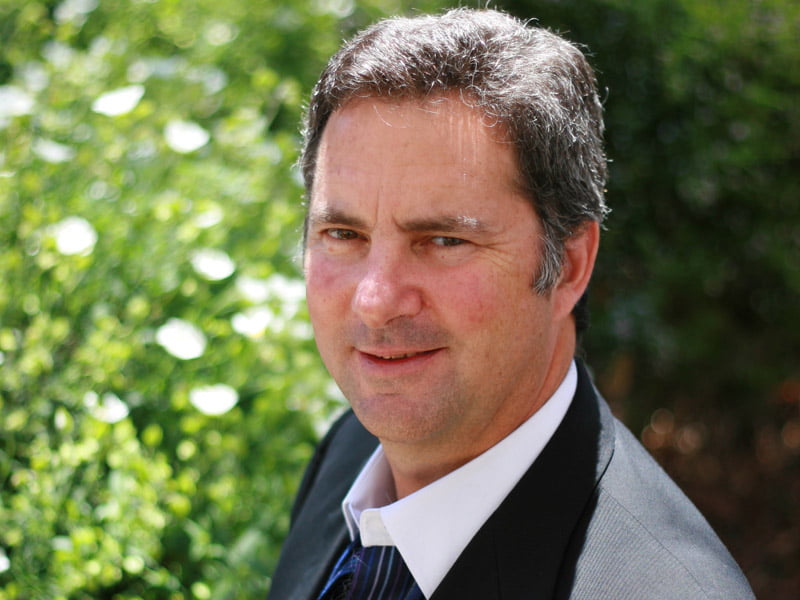Larry Marshall is having an each way bet on the future – investing in the CSIRO’s pure research initiatives while looking to spend $200 million on start ups through its venture capital arm.
Dr Marshall, chief executive of the CSIRO, says the organisation aspires to be an innovation catalyst: “CSIRO’s mission is to use science to deliver real world solutions to the big problems that our nation is either facing now or will face in the future.”
But it’s also keen to build the innovation capital and prosperity of the nation, and CSIRO’s home-grown venture capital fund will announce its first investment imminently according to Dr Marshall.

Speaking at an Australia-Israel Chamber of Commerce luncheon in Sydney on Tuesday Dr Marshall said that in the innovation stakes Australia wants to “give Israel a run for its money.”
But to do that Australia must first plug the gap that persists between research and commercial solutions, and that requires even deeper partnerships to be forged among researchers on CSIRO’s 57 campuses, students and academics in Australia’s 41 universities and industry leaders in all sectors according to Dr Marshall.
This is a key pillar of CSIRO’s Strategy 2020.
Critical to that Strategy is CSIRO’s ON science accelerator, which is intended to “take ideas on the lab bench and get them in front of customers and turn them into prototypes,” said Dr Marshall.
ON Accelerate along with ON Prime for early stage projects were established for CSIRO scientists in 2015 and extended to all universities to spur entrepreneurialism among scientists and researchers in 2016.
There are now 135 teams in ON (just 48 of which are CSIRO-only teams), involving 500 people across the innovation system. Six companies have emerged from ON – Modular Photonics, Coviu, Silentium Defence, Dental AR, RadVet and Life Whisperer.
There have also been exits from the program – ePAT, a facial recognition system to help doctors interpret non-verbal patient signals and Cardihab, an app developed to support people recovering from a heart attack.
“For a nation that ranks last in the OECD for collaboration, what a great piece of evidence to show we really can collaborate,” said Dr Marshall.
CSIRO is also about to announce the first investment by its venture capital arm, Main Sequence Ventures. This is the rebranded CSIRO Innovation Fund that first launched last December.
The Federal Government has stumped up $70 million for the fund over ten years, which will be topped up with $30 million of CSIRO WiFi royalties. Led by venture capital veterans Bill Bartee (Blackbird Ventures) and Phil Morle (Pollenizer) another $100 million is being sought to top up the fund.
Main Sequence Ventures is focused on opportunities – including those arising from the ON Accelerator – that might be in the too hard basket for other venture capital investors.
Bill Ferris, chair of Innovation and Science Australia, who also attended the AICC event said that he had never seen a more active venture capital market in Australia than right now.
“If you are a web based internet capital lite business start up there’s quite a lot of money sloshing around Australia,” he said, but he acknowledged that it was still harder to find funds in other areas,
Main Sequence Ventures is intended to help plug that gap.
While Dr Marshall is leaving the picking of commercial winners to the Bartees/Morle team, which has a strong venture capital track record, he is looking for ways to steer CSIRO research investment to have maximum impact.
“We traditionally spend a lot of time developing science roadmaps – in addition we need to look at the world market and look where the science needs to go to make sure science is better aligned with market needs.
“This is a really Important way to focus our resources to deliver more impact – literally trying to get ahead of the problems before they hit us and make sure we have got the science to solve those seemingly insoluble challenges.”
This seems to signal a change of thinking from Dr Marshall who famously clipped the wings of CSIRO’s climate research team, before having to perform a rapid U-turn to ensure Australia would have the research skills to address that challenge.
The fresh approach is having an impact; there are 30 per cent more students working in CSIRO labs, active licences to use CSIRO technologies have risen 25 per cent, and global revenues have risen 30 per cent according to Dr Marshall.
The question for industry seeking to innovate and collaborate with CSIRO is; “Is it possible for us to add a little bit more science to your business strategy? Can we make you a little bit more competitive?
“Our scientists will follow you pretty much anywhere, we’ll follow down the mine, we’ll follow you into the paddock, we’ll dig soil with you, fix fences with you and dive deep into your operating system. We will go anywhere you have a problem because we have a hunger for knowledge. We want to learn and we can’t create the right science if we are not inspired by the right problems.
“We’d like to do more of it because we really want to give Israel a run for its money.”
Do you know more? Contact James Riley via Email.

